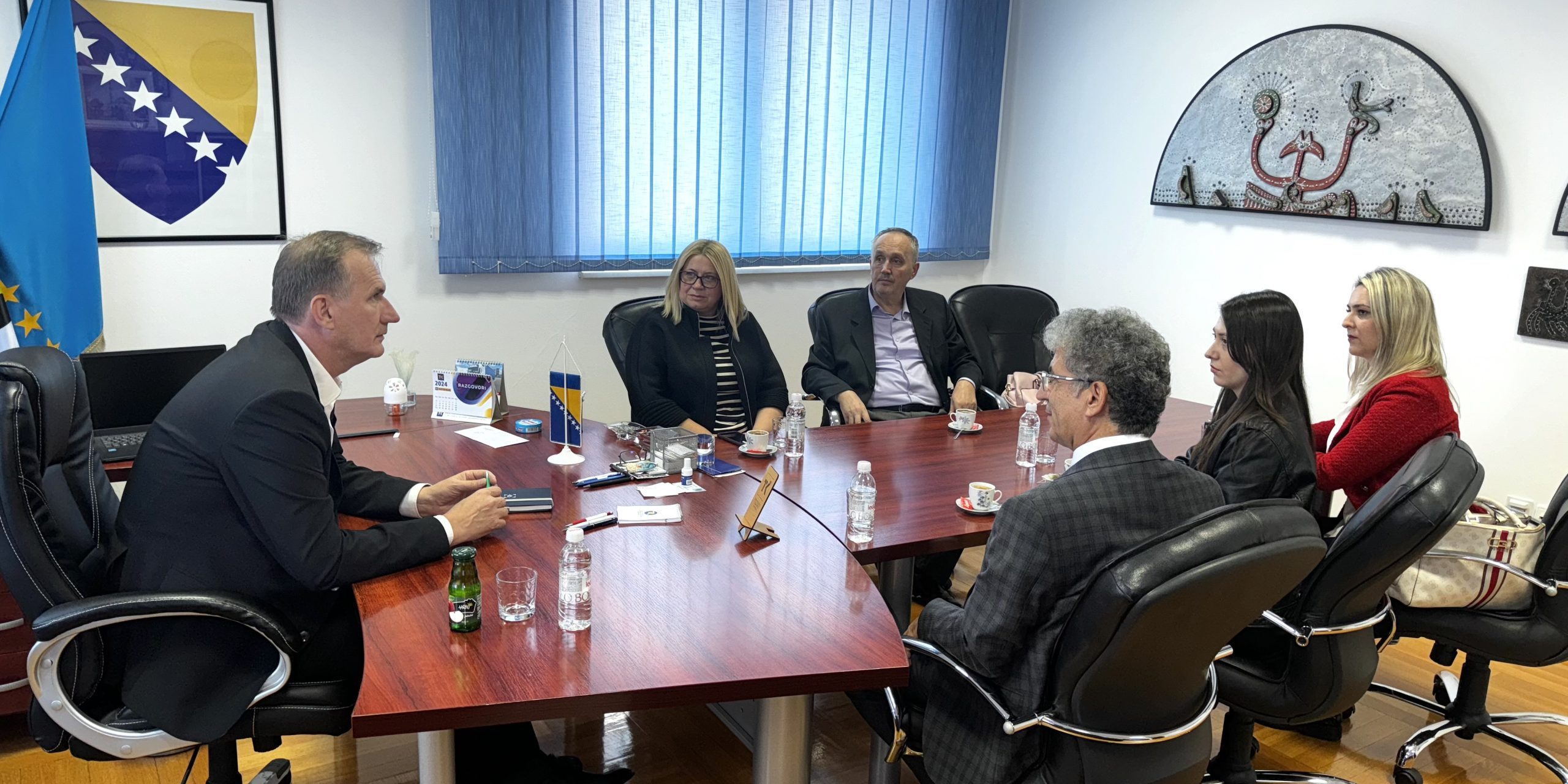During a professional visit to the University Clinical Center Tuzla, Prof. Dr. Ercan Kocakoc , an interventional radiologist from the Medical Park Health Group in Istanbul, performed five minimally invasive port catheter placement procedures. This surgical intervention, carried out under local anesthesia, involves placing a port catheter in a large vein beneath the collarbone. It is particularly beneficial for patients undergoing long-term intravenous therapies, such as chemotherapy.
Prof. Dr. Šekib Umihanić, Director of the University Clinical Center Tuzla, expressed his gratitude to Prof. Dr. Ercan Kocakoc and the Medical Park Health Group from Istanbul for facilitating the visit of the esteemed professor. He acknowledged the significant contribution to the professional development of doctors at the Clinic for Thoracic Surgery and the Clinic for Radiology and Nuclear Medicine. According to Director Umihanić, the port catheter placement procedure will greatly benefit patients undergoing chemotherapy, enhancing the quality of their care.
“The University Clinical Center Tuzla is in the process of acquiring a linear accelerator, with installation planned within the next 180 days, though we anticipate the process may be completed even sooner. Alongside the installation, staff will undergo training as we introduce three new radiotherapy techniques made possible by this advanced equipment. In line with these developments, staff training has already taken place at the Clinic for Thoracic Surgery, where Prof. Dr. Kocakoc from Turkey trained thoracic surgeons and radiologists on port catheter placement in the neck’s blood vessels for oncology patients receiving chemotherapy. This procedure offers significant benefits, sparing patients from multiple needle pricks and reducing damage to peripheral veins,” said Director Prof. Dr. Umihanić.
During his visit to the University Clinical Center Tuzla, Prof. Dr. Kocakoc familiarized himself with the institution’s organizational structure. He expressed his satisfaction with both the state-of-the-art equipment and the highly professional staff he encountered. Prof. Kocakoc also expressed his hope for continued successful collaboration and the implementation of future projects, benefiting both health institutions.







